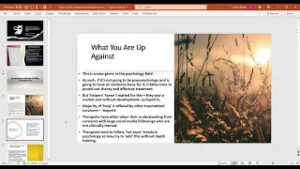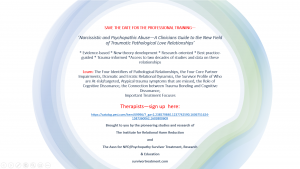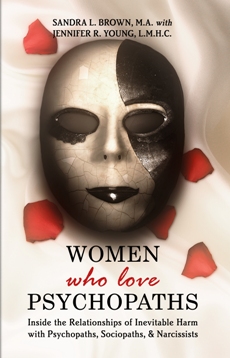By Jennifer Young, LMHC
Intimate partner violence is not just about power and control. As valuable as the Duluth Model has been in helping us to make a turn in the right direction towards saving women’s lives, we must allow our work to evolve. The good news is that it has evolved – we now know much more about how people work, the brain and neuroscience and the delicate intricacies of intimate partner violence today than ever before. And if we expand our understanding to meet the science, we can make real changes in our world and improve on our efforts to build a safe society for all of us.
In the 1980’s the Duluth Model explained domestic violence based on what the perpetrator was doing. It helped make the shift away from blaming the victim and towards holding the perpetrators responsible (What is the Duluth Model?, 2011). For decades women had carried the full burden of accountability.
The belief that has driven the Duluth Model is that societal power is what drives batterers to use violence. The innate idea of power within our society for hundreds of years, that men are more powerful than women, is at the source of the violence perpetrated against women. This power differential that continues has been handed down and sanctioned generation after generation. There is no denying that this power exists and is certainly a piece of the problem – a large piece. But, what we know now is far beyond society’s power structure. We now know, because of neuroscience, that there are human pieces of society’s structure that are broken and unfixable. We can no longer turn away from this fact.
Neuroscience and our efforts in understanding the human brain have taken us towards a deeper understanding of the human experience. For hundreds of years we have done the dance between nature and nurture. And for most of our time, we have struggled to validate the nature part and as a result, defaulted to nurture. This argument has not left us, even with neuroscience closing many of the gaps. However, the argument for the causes of human experiences related to nature are much, much clearer today.
What we know today, as it relates to perpetration of intimate partner violence, is that there are disorders of the brain that limit a person’s ability to have empathy and to have a conscience. Without these things one would have:
- The inability to sustain positive change
- The inability to have insight about how their negative behavior impacts others
- The inability to develop any emotional or spiritual depth
There are specific areas of the brain that are responsible for these functions and brain research has now been able to identify that these areas of the brain are different. The differences could be in size, shape or volume. This is not an issue of brain chemistry or circuitry, but an issue with the organ itself – a problem for which we have no treatment. To date, we do not have treatments that change the size, shape or volume of a part of the brain. It is a permanent mal-formation (Fallon, 2006).
And these brain disorders are not new. In fact, we have known about them for decades. It is simply the addition of the neuroscience that creates a new layer of understanding. These disorders – personality disorders (specifically cluster b disorders which include antisocial, narcissistic and borderline personality disorders along with sociopath and psychopath) – highlight the idea of what it means to be a perpetrator of violence. They also teach us that there are many layers to how these disordered people do what they do. And although being motivated by power over others is a piece, there is so much more.
What survivors of cluster b disordered people will tell you is that the explanation of “power and control” as a cause or framework for understanding what happened to them is simplistic at best. Further, continuing with the idea of power and control as a cause does not offer a solution or a way out. For many survivors, hearing that the violence is about power and control implies that change is possible. Just finding the right mix of giving them what they need will lead to a solution. And for those who have heard “he will not change”, there is no follow up. Domestic violence professionals are not sharing the details of why they won’t change. In fact, often perpetrators are sent to Batterer Intervention Program and survivors are told that he can change – if he attends the group.
The evolution of the information about perpetrators requires that we share all of what we know as clinical professionals. What we have known for decades is that there is a group of people – approximately 4-6% of the US population (Hare, 1998) (Stinson, et al, 2008) (Grant, et al, 2008) – who have no empathy and no conscience. This group of cluster b disordered individuals cannot change and there is no treatment for their disorder. As clinical professionals, we have available to us a breadth of information about the patterns and a categorical list of behaviors that we can share with survivors to help them identify if their partner is a cluster b. Finally, we can share the permanent nature of these disorders to inform survivors, once and for all and with certainty, that their partner will not change.
This information is being used for risk assessments related to intimate partner homicide but it must also be used by every domestic violence professional from the moment a survivor walks through the door. This information can help determine what type of safety planning is needed and ultimately the path of recovery. Over and over again, survivors share with us the first time they were told that their partner had a cluster b disorder. Having been given this information by a clinical professional shifted everything for them. Today, survivors head to the internet and see for themselves that their disordered partner meets every one of the items on the checklist. Then they leave – for good.
The history of the domestic violence movement is a solid foundation on which all of us stand. It provided a way forward and a way out for uncounted millions. But there is more – more information and more work to be done. We cannot stop and rest on one piece of the puzzle when survivors know there is more to the story. We must not be afraid to share what we know – say what we see – and give every survivor a chance.
Sources:
Fallon, James H. (2006) Neuroanatomical Background to Understanding the Brain of Young Psychopath. Ohio State Journal of Criminal Law. Vol 3:341.
What is the Duluth Model? (2011). Retrieved August 19, 2015 from www.theduluthmodel.org.
Robert D. Hare. (1998). Psychopaths and Their Nature: Implications for the Mental Health and Criminal Justice Systems in Psychopathy: Antisocial, Criminal, and Violent Behavior. ed. Theodore Millon, Erik Simonsen, Morten Birket-Smith, and Roger D. Davis. New York, NY: Guilford Press. 188-212.
Stinson FS, Dawson DA, et al. (2008). Prevalence, correlates, disability, and comorbidity of DSM-IV narcissistic personality disorder: results from the wave 2 national epidemiological survey on alcohol and related condition. Journal of Clinical Psychiatry. Jul; 69(7): 1033-45.
Grant, B. F., Chou, S. P., Goldstein, R. B., Huang, B., Stinson, F. S., Saha, T. D., et al. (2008).
Prevalence, correlates, disability, and comorbidity of DSM-IV borderline personality disorder:
Results from the wave 2 national epidemiologic survey on alcohol and related conditions.
Journal of Clinical Psychiatry, 69, 533-545.
(**If we can support you in your recovery process, please let us know. The Institute is the largest provider of recovery-based services for survivors of pathological love relationships. Information about pathological love relationships is in our award-winning book, Women Who Love Psychopaths, and is also available in our retreats, 1:1s, or phone sessions. See the website for more information.)






